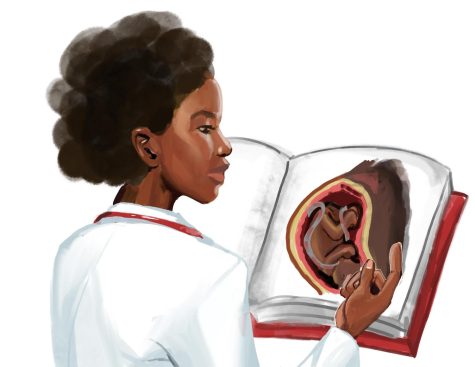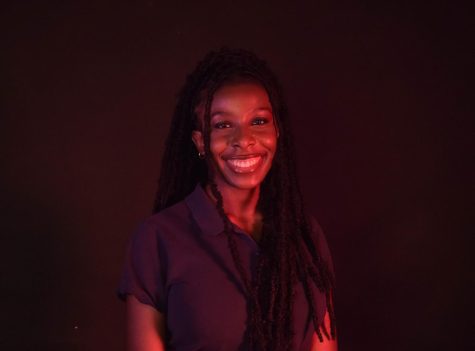Between gasps of air, Serena Williams demanded her doctors give her a CT scan and a heparin drip after giving birth to her daughter in 2018. Williams said in her interview at Vox that, instead of being met with concern from her medical staff, her nurse insisted that pain medicine was inducing her “confusion.”
Myths in medicine surrounding people of color are detrimental to the healthcare they receive. Racial inequality in healthcare is a multifaceted issue, but by addressing the history of medical myths and misnomers, we can begin to bring an end to racial inequality in healthcare.
As recently as 2020, COVID-19 proved that medical misnomers are hardly a thing of the past. Information circulated the internet on platforms like Twitter and TikTok claiming that Black people were immune to COVID-19, even as, according to Bloomberg, COVID-19 rates continued to rise throughout Africa and the Caribbean. While these claims were often made as a joke, unsubstantiated ideas about medical care for people of color have a far reaching history.
DISMANTLING MEDICAL MYTHS
In the manual “A Treatise on Tropical Diseases; and on The Climate of the West-Indies,” the late 1700s British doctor Benjamin Moseley asserted that Black people were able to handle immeasurable levels of pain, citing his numerous amputations on them as reference.
Moseley’s claims laid the foundation for centuries of medical torture. In her book, “Medical Apartheid,” Harriet A. Washington detailed how brain surgery, electrical shocks, amputation and mutilation were accepted for centuries as a necessary means for medical advancement as long as its recipients weren’t white.
Similar misnomers also prevailed in Native American communities. Samantha M. Williams, a PhD historian and writer who worked as a consultant for the Nevada Indian Commission, explained in her article the details of the studies conducted on indigenous children in Native American boarding schools during the 1960s and 70s.
In 1975, The Children’s Defense Fund raised concerns about drugs used to treat trachoma, an infection of the eye that can result in blindness, being tested on Native American children in these schools. Specifically, they asked whether the children’s parents had consented (they hadn’t) and whether the children would face any “unnecessary risks.”
Aside from infringing upon the bodily autonomy of the students, it was discovered that The Indian Health Service had run placebo trials on children with trachoma, allowing them to suffer from the disease in service of research that the children wouldn’t get to benefit from.
Similar to Black Americans, the medical cruelty committed against Native Americans was justified by centuries of myths that dehumanized them. From as early as Andrew Jackson’s presidency, indigenous Americans were described as biologically inferior.
Regardless of The Indian Health Service’s past, the organization continues to be controversial. One member of the Confederate Salish and Kootenai Tribes, Anna Whiting Sorrell, detailed the effects of the myth that Native Americans received free healthcare from the federal government.
“The Hellgate Treaty of 1855 says that because we gave up Western Montana we get healthcare,” Sorrell said to Montana Public Radio. “We paid for it. But we don’t just get healthcare for free. That’s not what’s happened at all.”
However, as a result of the treaty, there is still a belief in indigenous communities that federally provided healthcare is guaranteed. In reality, the Indian Health service spent 3,332 dollars per patient as of 2017 in comparison to the 12,829 dollars allocated to patients under Medicare according to The New York Times.
Even so, indigenous Americans mostly remain within the Indian Health Service (IHS) because of the barriers preventing access to the private sector of healthcare. This means that health care systems that exist beyond the IHS rarely service Native American patients.
EFFECTS OF MISNOMERS
For people of color, the effects of medical myths are evidenced in the rates of death and misdiagnoses within their population.
According to an article published in The US National Library of Medicine & National Institutes of Health, while people of color are less likely to become afflicted with skin cancer, they are far more likely to die from it due to a delay in diagnosis.
Dr. Naiara Abreu Fraga Braghiroli from the Miami Cancer Institute cited that the average 5-year survival rate for melanoma is 92% in white populations but 67% percent for Black people. This is because it tends to only be caught in later stages of diagnosis.
One of the prominent effects of medical misnomers is the high mortality rate among black women, especially in pregnancy. According to a BBC report, Black women are four times more likely to die in childbirth than white women.
The effects of medical misnomers are far reaching and Black communities are painfully aware of their position within the healthcare system. Dr. Rohana Motley White, obstetrician gynecologist at Advent Health, noted that the pain of black women is constantly neglected. She continued saying that the fear this instills in black women when they interact with medical professionals is paralyzing.
FINDING SOLUTIONS
Dr. Hao Feng, an assistant professor of dermatology at the University of Connecticut reported to the New York Times that only 10% of medical textbooks present skin diseases on darkly pigmented skin. When they are included, they most often depict syphilis, a disease most notorious for its involvement in the unethical Tuskegee experiment which was run on Black Americans in the 1930s, similar to the studies on indigenous children.
The reality is, medical conditions and symptoms present differently in varying levels of skin pigmentation. Because of that, academia needs to reflect diversity of skin tone.
However, Black medical illustrators are working to find a solution. Chidiebere Ibe is a Nigerian medical illustrator currently studying at Kyiv Medical University. His work went viral throughout the internet with his picture of a Black fetus.
As there is a continued push for diversity in medical illustrations, Yale senior medical student Joel Bervell noted the medical illustrations we are getting are dominated by images that portray people of color with infectious diseases. Bervell runs a TikTok page dedicated to disproving medical myths, as a self-proclaimed “Medical Mythbuster.” And he’s skyrocketed to fame, amassing 11.8 million likes.
“It’s so interesting that in any case that mentions a non-white person, it’s always in relation to an infectious disease,” he said in a recent video. “All that does is reinforce stereotypes about marginalized populations and that’s not the way to make medical illustrations more equitable.”
However, the push for diversity, not only in the medical doctors and physicians, but also addressing the myths that continue to prevail in medicine are a pertinent solution to the problem.

When the resources available to healthcare professionals are severely void of diversity, people of color become the victims of a system built off of their own exploitation. But by reclaiming their space within institutions that historically exclude them, people of color can prove that medical diversity is more than just skin deep.





Dr. Rohana Motley-White • May 18, 2022 at 5:56 pm
Excellent historical references and commentary underlying the implicit biases inherent in our healthcare system. It’s a challenge in this healthcare environment to educate colleagues to listen to their patients and not assume based on their preconceived prejudices.